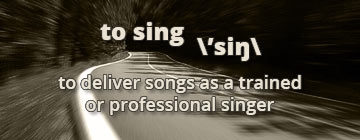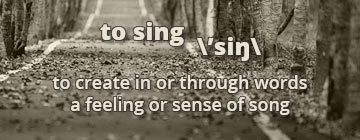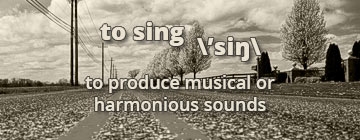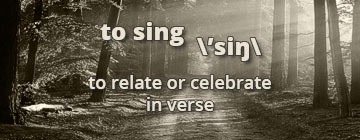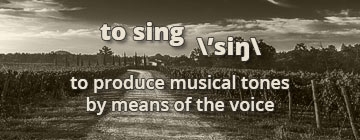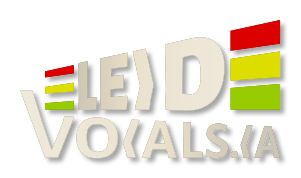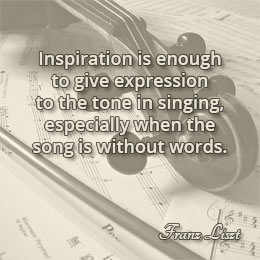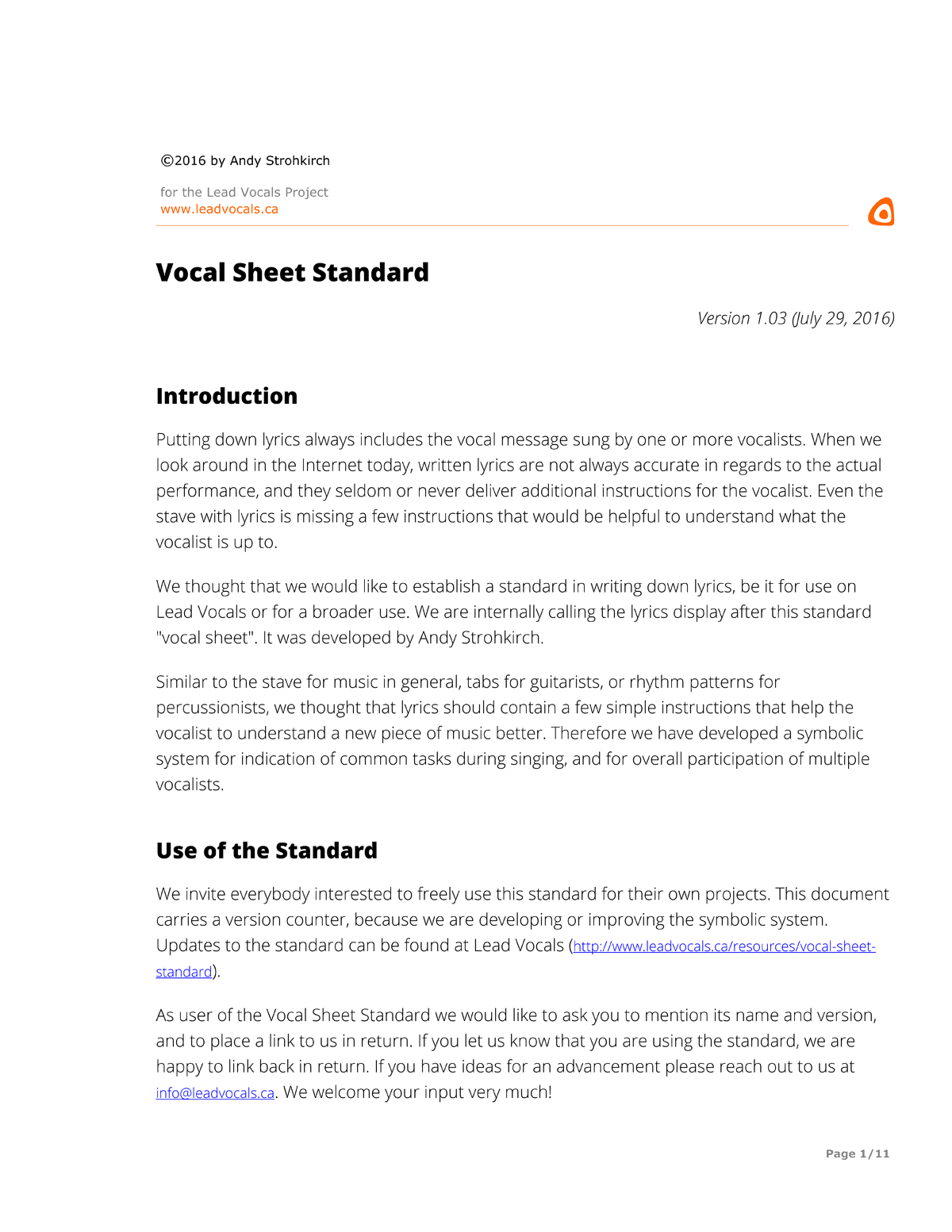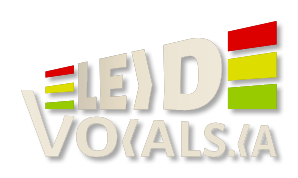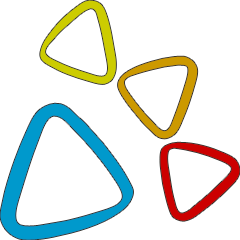Resources
Vocal Sheet Standard
Putting down lyrics always includes the vocal message sung by one or more vocalists. When we look around in the Internet today, written lyrics are not always accurate in regards to the actual performance, and they seldom or never deliver additional instructions for the vocalist. Even the stave with lyrics is missing a few instructions that would be helpful to understand what the vocalist is up to.
We thought that we would like to establish a standard in writing down lyrics, be it for use on Lead Vocals or for a broader use. We are internally calling the lyrics display after this standard "vocal sheet". It was developed by Andy Strohkirch.
Feel free to pick up this standard and use it on your own projects! If you do so, we encourage you to let us know in exchange for a backlink.
Similar to the stave for music in general, tabs for guitarists, or rhythm patterns for percussionists, we thought that lyrics should contain a few simple instructions that help the vocalist to understand a new piece of music better. Therefore we have developed a symbolic system for indication of common tasks during singing, and for overall participation of multiple vocalists.
Please choose a type of indication to learn about this standard.
Vocal Sheet Standard, Version 1.03 (July 29, 2016)
- Download this Document
- Breaks
- Phrasing a Word
- Timbral Technique
- Effects
- Overlapping
- Multiple Vocalists
- Unsung Lyrics
^ Download this Document
We invite everybody interested to freely use this standard for their own projects. The document carries a version counter, because we are developing or improving the symbolic system. Updates to the Vocal Sheet Standard can be found here at Lead Vocals.
|
Vocal Sheet Standard Documentation |
by Andy Strohkirch Click on the image to open a larger preview of the document. Download the documentation of the Vocal Sheet Standard as PDF document. |
^ Breaks
During the singing performance the lead vocalist may make a break between lyrics. This can be within a section between two lines, or it can be between two words within a line. We only show breaks if the break is rather unexpected.
If all lines within a section, or a word within a line that complies with the overall rhythmic pattern of the section are divided by breaks, we do not indicate the pause, since the breaks can be expected by the vocalist.
Use "_" and "…" for the symbol.
Example for short breaks
one _ two
There is a rather short break between the two words.
Examples for long breaks
one … two
There is a longer break between the two words.
one two three
…
one two three
There is a longer break between two lines. This may or may not indicate a change in melody for the second line.
^ Phrasing a Word
All lyrics in singing are delivered in a particular way, so phrasing with one or multiple words is very common. Usually lyrics do not include any instructions how to be phrased by the vocalist.
Sometimes a phrasing comes unexpected, or is an excessive way to dramatise a specific part of the vocal line, per example at the end of a sentence. It is then, when we include an instruction for the phrasing with the lyrics.
Use "-" and " " for the symbol. If the phrase is standing alone as an expression, bracket it with "(" and ")".
Examples for phrasing a word
way
The word "way" is sung normal, or it is sung phrased as expected.
way-yay
The word "way" is sung as one, but with 2 highlights.
way-yay-yay
The word "way" is sung as one, but with 3 highlights.
one two three (oh-ho)
The word "oh" is sung as one, but with 2 highlights.
Examples for phrasing a word with breaks
way-ay
way ay
In both variants the word "way" is sung as two words: "way" and "ay".
way yay
The word "way" is sung as two words: "way" and "yay".
(o-oh)
The word "oh" is sung as two words: "o" and "oh".
^ Timbral Technique
The timbral technique describes a specific way of singing, per example screaming or whispering. Sometimes a short phrase or a word is delivered differently than the rest of the lyrics. In this case we want to indicate the difference in the singing technique with a symbol.
At Lead Vocals, if one or more sections are sung in a specific timbral technique, we do not necessarily indicate this because the change of the singing technique is not surprising. On the contrary if a composer would like to deliver the information for example within sheet music, he or she would want to use the symbolic.
Use capitalization and "/", "|" and "\" for the symbol.
Examples for Growling
one two /THREE/
The word "three" is growled.
/ONE TWO THREE/
The whole line is growled.
Examples for Recitative/Rapping
one |two three|
The words "two" and "three" are either spoken or rapped.
|one two three|
The whole line is either spoken or rapped.
Examples for Screaming
one two THREE
The word "three" is screamed.
ONE TWO THREE
The whole line is screamed.
Examples for Whispering
one two \three\
The word "three" is whispered.
\one two three\
The whole line is whispered.
^ Effects
Sometimes the voice of a vocalist is alienated in production and/or also during live performance. An effect on the voice will make the vocalist sound different during its use, which we signalize with an enclosing symbol. If the effect affects more than one line of lyrics, we enclose each of the lines. If the effect is used only on one or more words within a line, we enclose the word or words.
We do not use the symbolic for overall effects that are used for the complete track, such as per example reverb.
Use "<", ">", "<[", and "]>" for the symbol.
Examples for effects on words
one two <three>
The word "three" of the lead vocal is alienated by an effect.
[one two <three>]
The word "three" of the backing vocal is alienated by an effect.
one two <[three]>
The backing vocal is alienated by an effect.
Examples for effects on lines
<one two three>
The lead vocals are alienated by an effect.
<[one two three]>
The backing vocals are alienated by an effect.
^ Overlapping
In music production sometimes the words of the lead vocalist overlap. If that's the case, the lead vocalist has to leave out some of the words during performance. The missing words will be added as sample or with help of a backing vocalist during performance.
If vocals from lead vocalist and backing vocalist overlap, we do not use the indication, because the overlapping happens for different performers. We only use the indication, if the same vocalist is envolved in the overlapping.
We may include brackets to indicate which word of the lead vocal will become a backing vocal due to the overlap. The brackets are optional for complete lines.
Use "»", "«", "« [", and "] »" for the symbols.
Examples for overlapping words
one [two] »
three four
The word "two" and "three" overlap in production. Leave out the word "two" during performance!
one two
« [three] four
The word "two" and "three" overlap in production. Leave out the word "three" during performance!
Examples for overlapping lines
one two »
three four
These lines overlap in production. Sing the second line only!
[one two] »
three four
These lines overlap in production. Sing the second line only! The first line has become a backing vocal.
one two
« three four
These lines overlap in production. Sing the first line only!
one two
« [three four]
These lines overlap in production. Sing the first line only! The second line has become a backing vocal.
^ Multiple Vocalists
Sometimes a song is performed with multiple vocalists. These songs could contain multiple lead singers with or without one or more backing vocalists, or one lead singer with one or more backing vocalists. If we provide the performers names we do indicate this by listing them before the lyrics. The indication is made as headline, either for a complete section, or for single or multiple lines within a section.
If a group of backing vocalists sings matching lyrics and melodies, we do not usually distinguish them by name. We simply call them "Backings" or "Choir" depending on the amount of singers.
If we do not use names for vocalists at all, we mark backing vocals with enclosing brackets using "[" and "]". If the backing vocals join in to support the lead vocalist, we can indicate this with an additional symbol in front of the brackets using "^[" and "]".
If a singer overtakes within one line or section, we indicate this with a "^"-symbol and expand the list in the headline with the same symbol and the name of the additional singer. We add the previous singer after the "^"-symbol if the additional singer joins in.
Use the separation symbols "and" or "," to combine names of vocalists who sing together.
General examples
one two [three]
The word "three" is sung by one or more backing vocalists.
[one two three]
The line is sung by one or more backing vocalists.
one two ^[three]
The word "three" is sung by the lead and backing vocalists.
^[one two three]
The line is sung by the lead and backing vocalists.
one two ^ three
At the "^" one or multiple singers either join in or overtake.
Examples for singers by name (including duets)
John Doe
one two three
Singer "John Doe" sings "one two three".
Jane Foe
one two three
Singer "Jane Foe" sings "one two three".
John Doe and Jane Foe
one two three
John Doe, Jane Foe
one two three
Singer "John Doe" and singer "Jane Foe" sing "one two three" together.
John Doe ^ Jane Foe
one two ^ three
Singer "John Doe" sings "one two" alone; singer "Jane Foe" overtakes at "^" and sings "three"
John Doe ^ John Doe and Jane Foe
one two ^ three
John Doe ^ John Doe, Jane Foe
one two ^ three
Singer "John Doe" sings "one two" alone; singer "Jane Foe" joins in at "^" and both sing "three".
Examples for singers and backings
Backings
one two three
The "Backing Vocalists" sing "one two three".
John Doe and Backings
one two three
John Doe, Backings
one two three
Singer "John Doe" and the "Backing Vocalists" sing "one two three" together.
John Doe ^ Backings
one two ^ three
Singer "John Doe" sings "one two"; the "Backing Vocalists" overtake at "^" and sing "three".
John Doe ^ John Doe and Backings
one two ^ three
John Doe ^ John Doe, Backings
one two ^ three
Singer "John Doe" sings "one two" alone; the "Backing Vocalists" join in at "^" and all sing "three".
Examples for singers and choir
Choir
one two three
The "Choir" sings "one two three".
John Doe and Choir
one two three
John Doe, Choir
one two three
Singer "John Doe" and the "Choir" sing "one two three" together.
John Doe ^ Choir
one two ^ three
Singer "John Doe" sings "one two"; the "Choir" overtakes at "^" and sings "three".
John Doe ^ John Doe and Choir
one two ^ three
John Doe ^ John Doe, Choir
one two ^ three
Singer "John Doe" sings "one two" alone; the "Choir" joins in at "^" and all sing "three".
^ Unsung Lyrics
Sometimes lyrics contain words that are not sung by the vocalist. At Lead Vocals we leave out these words from the lyrics display in most cases. But if a lyric becomes senseless without the missing word, we would add that word and indicate that it's not performed by enclosing it with symbols. Composers may include all unsung lyrics.
Use "{" and "}" for the symbols.
Example
one {two} three
The word "two" is silent, meaning that it is not sung by the vocalist.


